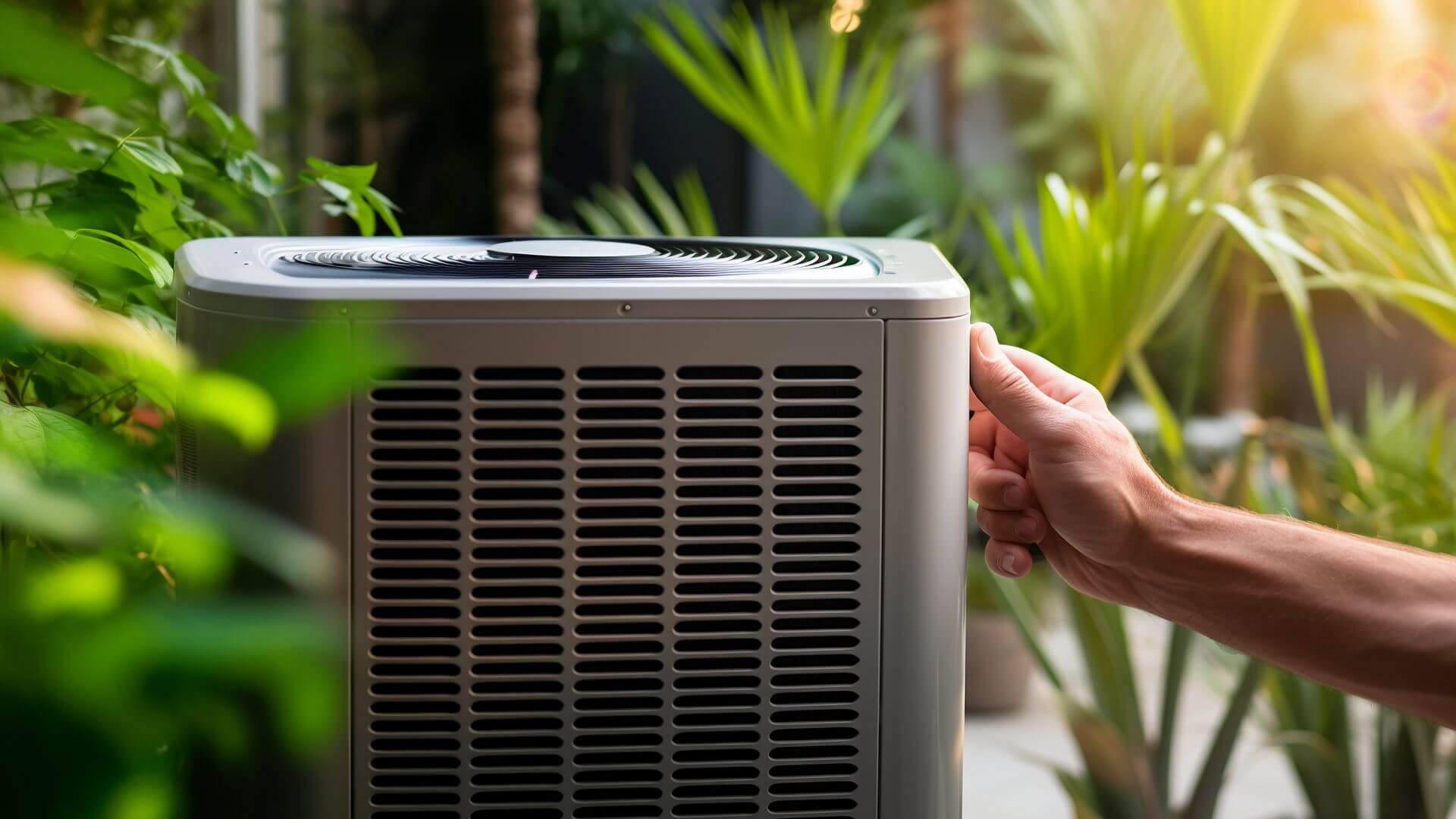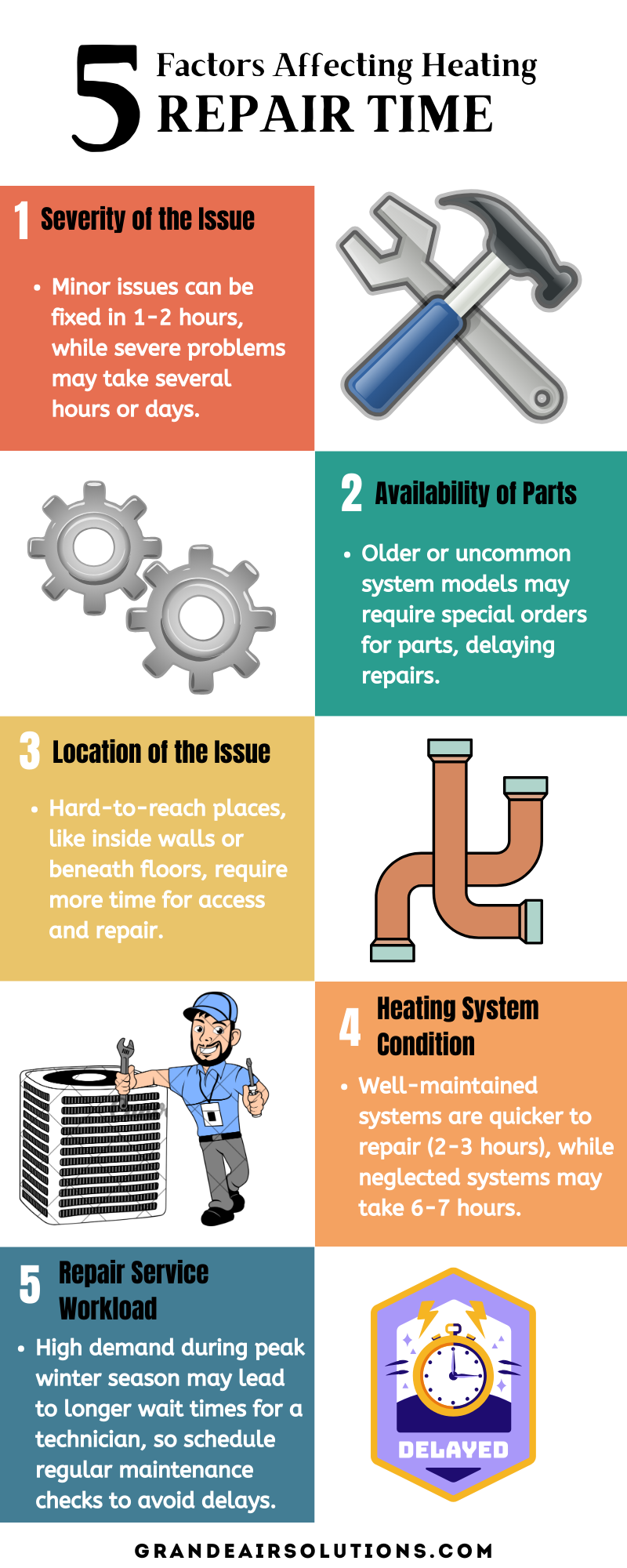
Owning a piece of Austin real estate brings with it the responsibility of maintaining a cozy, comfortable living space. As winter's chill descends upon Austin, the last thing you want is a heating system that's out of commission. But how long should you expect to wait for heating repair in Austin?
This blog post will answer this query, offering insights into average repair times and factors that could influence them. In addition, we'll provide some tips on spotting signs of a faulty heat pump.
You'll walk away with a better understanding of the heating repair process, helping you keep your home toasty and your family happy.
| Issue | Description | Estimated Repair Time |
| Faulty Thermostats | Inaccurate temperature control, due to thermostat issues may vary in complexity. | 1-3 hours |
| Frequent Cycling | The system constantly switching between on and off modes may result from filter or thermostat problems. | 2-4 hours |
| Pilot/Ignition Problems | Inconsistent or non-existent heat supply due to pilot light or ignition control issues. | 1-3 hours |
| Persistent Blower | The blower runs continuously, leading to inefficient heating. The repair time depends on the complexity. | 4-8 hours |
| Clogged or Dirty Filters | Decreased efficiency and lifespan due to dirty or clogged filters, with a replacement taking 2-4 hours. | 2-4 hours |
| Troublesome Leaky Ducts | Leaky ducts cause uneven temperature and heat loss; repair time varies based on severity and accessibility. | 2-6 hours |
| Rising Utility Bills | High utility bills indicate potential underlying issues, requiring a thorough inspection and repair. | 8-12 hours |
A faulty thermostat is akin to a car with a broken steering wheel. The system may produce heat, but without accurate control and regulation, you'll be left with uneven temperature distribution. Thermostat issues can range from simple calibration errors to complex electrical problems.
For less complicated fixes, heating repair in Austin can be completed within an hour. However, if your thermostat system is advanced or the issue is more stubborn, the repair could stretch to 3 hours.
If your heating system behaves like a fickle light switch, constantly flipping between on and off modes, you're dealing with frequent cycling.
This issue can stem from various causes, including a dirty filter or a malfunctioning thermostat.
Simple mechanical fixes can often be resolved within 2 hours, but if parts need to be ordered or a more complex issue is at play, you might be looking at a 4-hour repair timeline.
Imagine lighting a candle, only for it to flicker out moments later. Apply that scenario to your heating system's pilot light or ignition control.
An inconsistent or non-existent heat supply can leave you shivering in your home. Unfortunately, these issues can be tricky to repair.
Problems with the pilot light or ignition control involve precise fixes or part replacements, often taking 1-3 hours to resolve.
One of the most common heating problems Austin residents face is the blower running continuously.
This not only leads to inefficient heating but also skyrockets your energy bills. It's crucial to note that blower issues can range from simple malfunctions to complex problems.
A simple adjustment, like resetting the thermostat, can be done within a few hours. Meanwhile, more intricate repairs, such as motor replacement, usually take 4-8 hours.
A dirty or clogged filter forces your heating system to work harder than necessary, decreasing its efficiency and lifespan.
Regular maintenance is the best preventive measure, but in case of an emergency, filter replacements usually take 2-4 hours.
For instance, if your filter is clogged due to excessive dirt and dust accumulation, a heating repair specialist in Austin can replace it within this timeframe.
Leaky ducts can be a major culprit in heating inefficiencies, causing heat loss during transmission and uneven temperature throughout your home.
For example, if your upstairs rooms are colder than the lower ones, it may be due to a leaky duct.
The repair timeline for leaky ducts can vary between 2-6 hours, depending on the severity of the leakage and the accessibility of the ducts.
While a high utility bill isn't a direct heating issue, it often points to problems within your heating system. Causes could range from leaky ducts to inefficient furnaces and are often an indication of bigger issues lurking beneath the surface.
Identifying and rectifying these underlying issues can take anywhere between 8-12 hours, as a thorough inspection would be required, depending on their complexity.
Understanding these common heating issues and their repair timelines can help you better manage your expectations when scheduling a heating repair in Austin. Remember, the key to a warm, comfortable home lies in regular maintenance and prompt attention to any heating problems.

The extent and intensity of the heating problem significantly dictate the time required for heating repair in Austin. For instance, minor issues like a faulty thermostat or circuit breaker can be fixed within an hour or two. However, if the problem is more severe, say a broken heat exchanger or a gas leak, the repair time can stretch to several hours or even a few days. These intricate problems require meticulous inspection and repair, which naturally lengthens the process.
The availability of necessary replacement parts is another crucial factor. Suppose your heating system model is older or less common. The required parts may not be readily available, which could prolong the repair process. Sometimes, it may even require special orders from manufacturers, which can take several days to arrive.
The location of the heating system problem can also affect the repair time. If the issue is in a hard-to-reach place, such as inside walls or beneath floors, it will take more time to access and fix. In some cases, repairing an issue hidden behind construction could take up to twice the time it takes to fix a readily accessible problem.
The state of your heating system also plays a vital role. A system that has been regularly serviced and well-maintained will likely be quicker to repair compared to a neglected one. If your system has multiple issues due to poor maintenance, it will take more time for heating repair in Austin. For instance, a well-maintained system may be repaired in 2-3 hours, while a neglected one could take 6-7 hours or even more.
Last but not least, the workload of the repair service can impact the repair time. During the peak winter season, heating repair services in Austin are in high demand. As a result, you might have to wait a bit before a technician is available to attend to your issue. Therefore, it's always a good idea to schedule regular maintenance checks to avoid last-minute rush.
Maintaining your heating system isn't a Herculean task. Regular maintenance and timely servicing can be your secret weapon in avoiding expensive, time-consuming heating repairs in Austin. A well-maintained HVAC system will not frequently break down and cause emergencies. The Department of Energy suggests that regular maintenance can increase efficiency and improve the lifespan of your heating system.
Your choice of heating repair service can make all the difference in the speed and quality of your repair. Not all HVAC repair and maintenance services are created equal, so do your research.
Knowledge is power. The more you understand the warning signs of a heating system emergency, the quicker you can get repairs underway. Here are some signs to watch out for:
Remember, the quicker you act, the faster you can have your heating system back up and running. So, stay vigilant, act fast, and call Grande Air Solutions for urgent heating repair in Austin, Texas!
